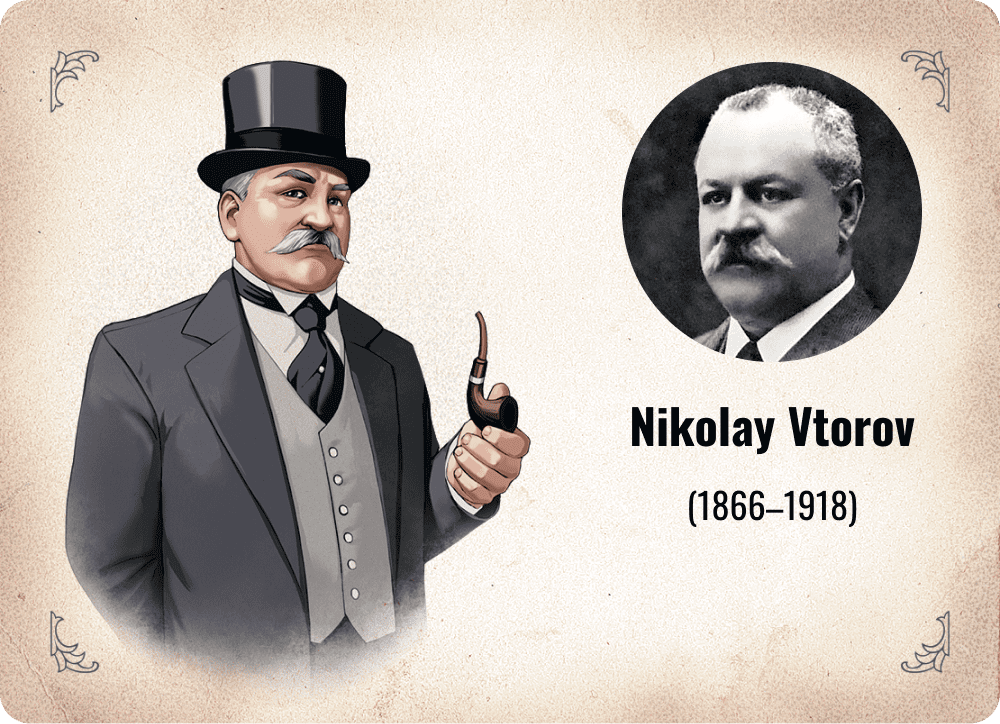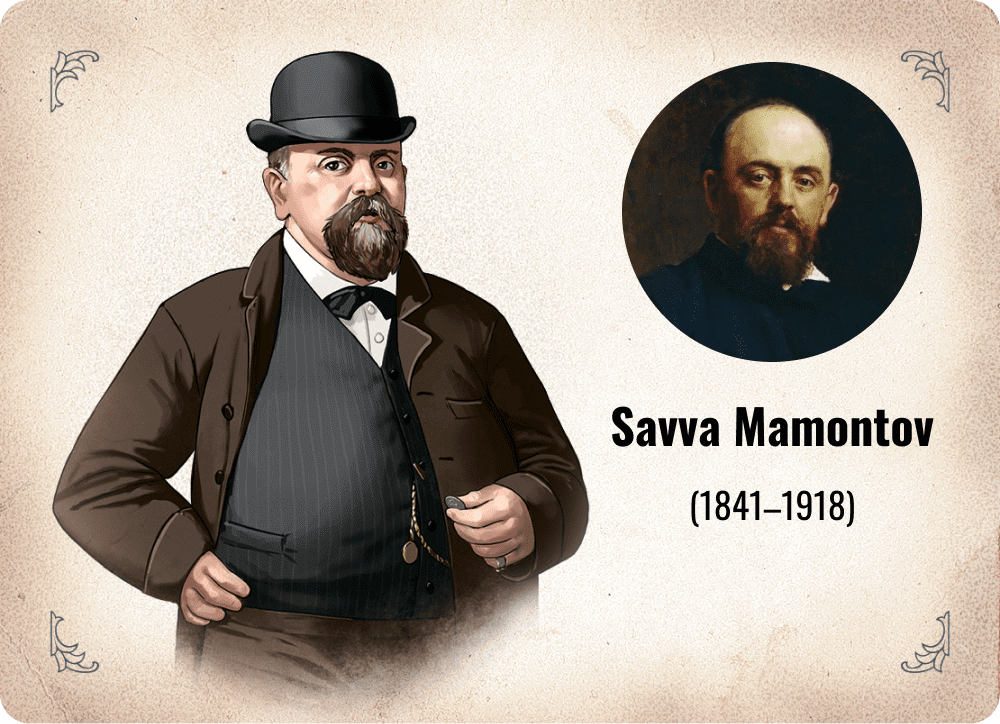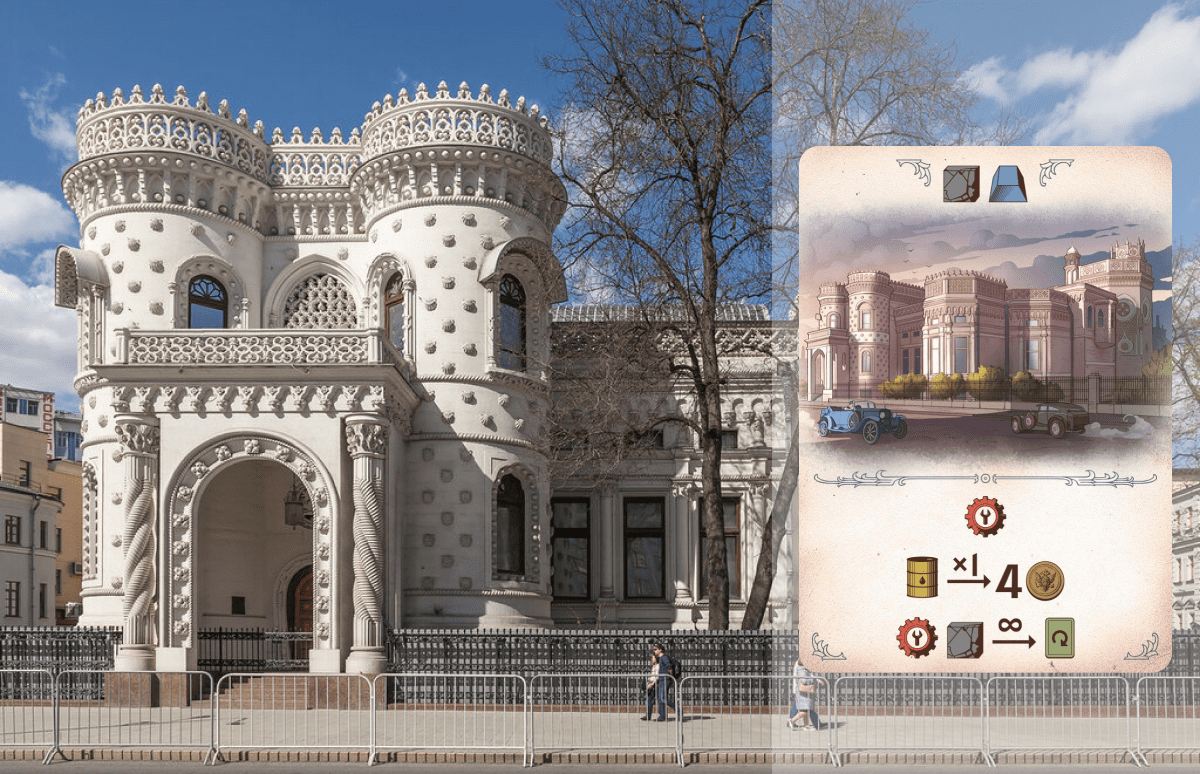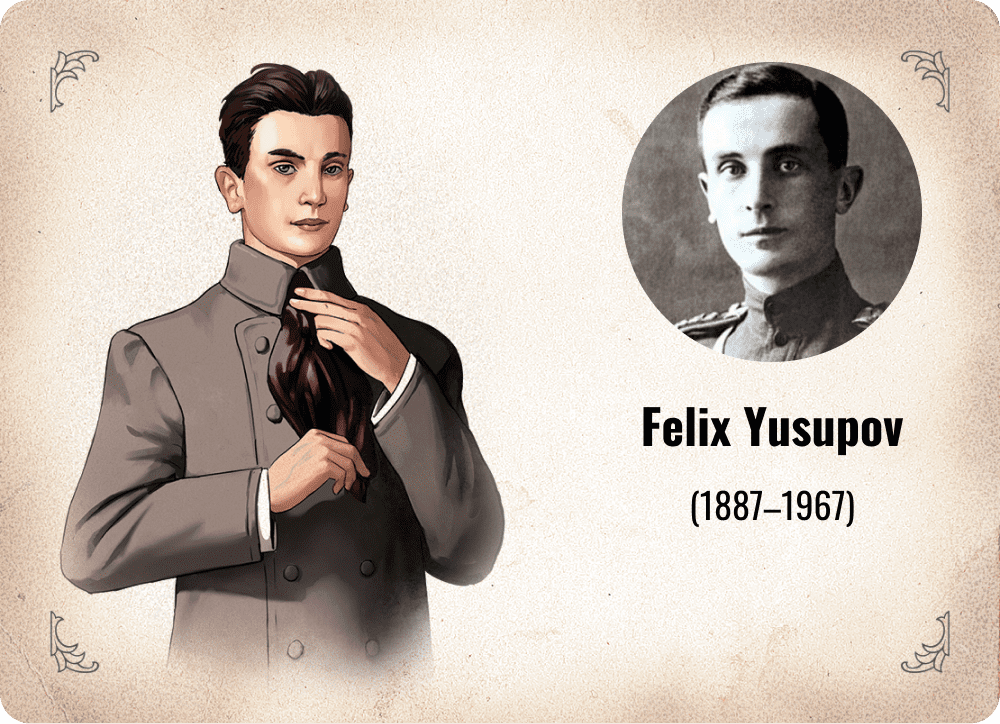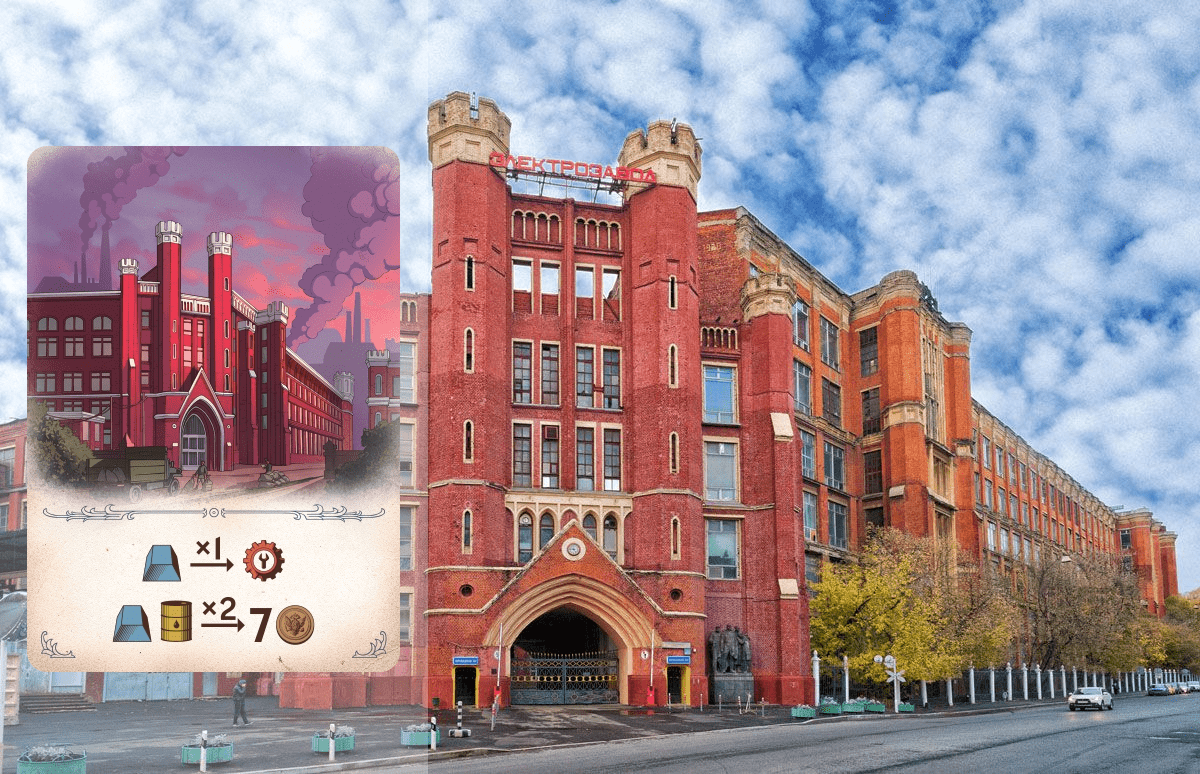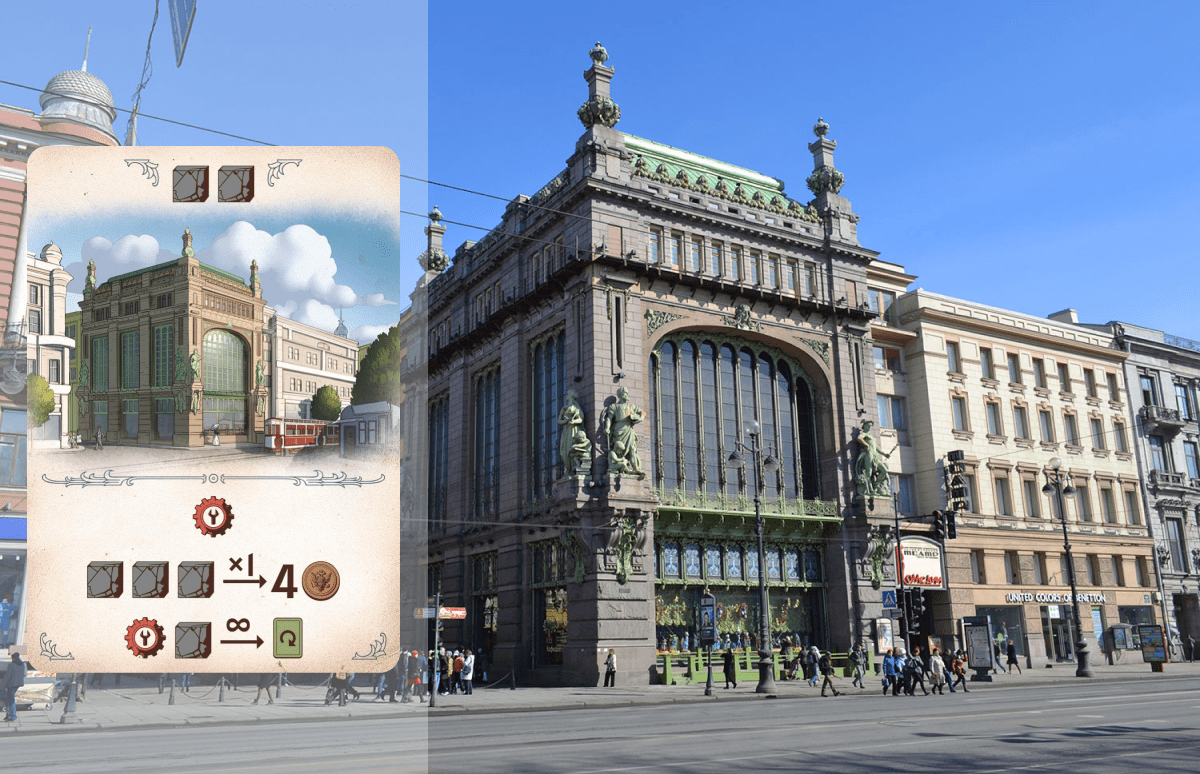Gameplay ArcHWay — Historical Setting in Furnace
Hi, folks!
Earlier we talked about the auction mechanism and production phase in Furnace, and today we’d like to tell you more about another aspect of the game — its setting.
Setting
Furnace is set in the world of Russian industrialism of the turn of the 19th-20th century.
Before the Russian Revolution in 1917, the Russian empire was experiencing the same technological burst as the rest of the world. While Cornelius Vanderbilt, John D. Rockefeller, Andrew Carnegie, J. P. Morgan, Henry Ford, and many others were building America, numerous Russian industrialists owned and managed factories, mines, and banks, too. They competed with foreign manufacturers, fought for “easy” budget money, were elected for the State Council, and made generous donations to hospitals and art galleries.
How did they live? What were they famous for and how important is their footprint in Russian history now? Let’s take all five characters from the game and see for ourselves!
Russian Morgan
Nikolay Alexandrovich Vtorov was called a “Siberian American” for his business acumen and ability to manage complex situations. According to the estimate made by Forbes in 2017, Nikolay was the richest entrepreneur of the Russian Empire and his fortune exceeded 60mln rubles (appx. $720mln).
The younger son of a successful merchant in Irkutsk inherited a 13.6mln rubles (appx. $163mln) with his brother and moved to Moscow where his business developed rapidly: yesterday Nikolay traded tea, and today he bought dozens of companies and banks, invested in new production facilities, and fulfilled military orders bringing him windfall revenues during the First World War. Being engaged in the technological race and gold mining, Nikolay did not forget about his hobby — being intrigued by photography, he owned a photo plate production facility.
After the revolution of 1917, according to some historians, Nikolay expressed his loyalty to the new government but was killed under obscure circumstances in May 1918.
Savva the Magnificent
Savva Ivanovich Mamontov inherited his father’s shares of the railway company and engaged in railway construction. Savva’s main achievement is the railroad from Moscow to Arkhangelsk, which was extremely necessary at that time. However, two years after its launch, Savva failed to pay off his loan and was arrested and imprisoned. After the hearing, the charges were dropped, but Savva went bankrupt and died in poverty.
In the obituaries, Mamontov was called “Medici of Moscow” and “Savva the Magnificent” by analogy with a nickname of Lorenzo Medici. He was frequently compared with Lorenzo the Magnificent as the Florentine patron of arts also supported prominent artists, had good eyes for the blossoming talents, could inspire everyone around him with new ideas, and, at the same time, was famous for being not quite a patron, but a tyrant of arts.
His extravagance and artistry always manifested itself. For instance, in his village near Moscow, Savva could take walks in a long Italian cloak with silver inserts and a wide-brimmed hat. His contemporaries mentioned that Savva even managed to turn his own hearing into a show.
Prominent Gallerist
Pavel Mikhailovich Tretyakov spent his youth in commerce, working with his father and brother. When the father passed away, the brothers expanded the business and built paper mills with a total of several thousand employees.
Their father also developed their love for arts, so when the brothers were wealthy enough (Pavel was in his early twenties at the time), they decided to create their own collection of Russian paintings.
For a long time, Pavel kept all of the acquired paintings in his house in Moscow, but they required more and more space. Finally, the brothers financed constructing a building for their gallery and launched a publicly accessible museum that turned into the State Tretyakov Gallery visited by 2 836 000 people in 2019.
Principled Businesswoman
Varvara Alekseevna Morozova was probably the most famous philanthropist in Moscow of her time and an extraordinary woman. After her husband’s death from a mental disease, Varvara inherited a huge fortune under one condition: she must have no second husband. Varvara owned her fate and didn’t want to choose, so she lived in civil marriage with Vasily Sobolevsky, a Russian journalist and a newspaper publisher, which at that time was an unimaginable brazenness.
Neither her contemporaries nor her family could understand why Varvara organized numerous labor movement studies, sponsored educational courses, and held illegal revolutionary meetings. Her activity was closely monitored by the police at all times. Varvara did not spend much money on her whims and donated a lot: her money was used to build a psychiatric hospital, a cancer research institute, classrooms for Moscow University, the first free library in Moscow, and much more.
Unlike his mother, Arseny Morozov was a spoiled child. When he built his house in Moscow (his estate is featured in one of the starting cards in Furnace — see below), Varvara told him: “I used to be the only one to know that you were a fool. Now, the whole Moscow will know that!” Arseny led a bright but short life: during a party, he bragged about shooting his own knee. When he finally did, his guests left in disappointment, while Arseny didn’t even take care of the wound and died of sepsis.
Murderous Aristocrat
Felix Felixovich Yusupov did not follow in the footsteps of his father, who served as mayor and left his only son a solid fortune that defined his son’s life. Since childhood, Felix was one of the country’s most eligible bachelors, and his father decided to enhance his son’s position by sending him to Oxford. Obviously, it was not difficult for a man with such a remarkable appearance, vast connections, and a huge fortune to find a good catch. Felix married the Emperor’s niece and soon emigrated and never went back.
History, however, will remember Felix Yusupov not as a rich heir or an emigrant, but as the murderer of Grigory Rasputin — one of the most mysterious characters of the early 20th century. In his family home, Felix gathered his three accomplices and poisoned Rasputin with a dose of potassium cyanide that could kill five people — with no success. Then, Yusupov went upstairs to get the gun and shot Rasputin in the back. When he approached to check if Rasputin was dead, Grigory attacked Felix and tried to strangle him. Then, Rasputin was shot and beaten by the whole group. They also claim that Rasputin, after being poisoned, shot and beaten, tried to escape, so they had to throw him in the river.
Buildings
Furnace is also full of hidden architectural references. See the pictures below and take a look at the cards: maybe, you will be able to recognize some of them?
What are we missing?
Let us know what character or building you’d like to see as a promo or, maybe, even a part of the upcoming editions of the game! Share your ideas in the BGG thread here.

